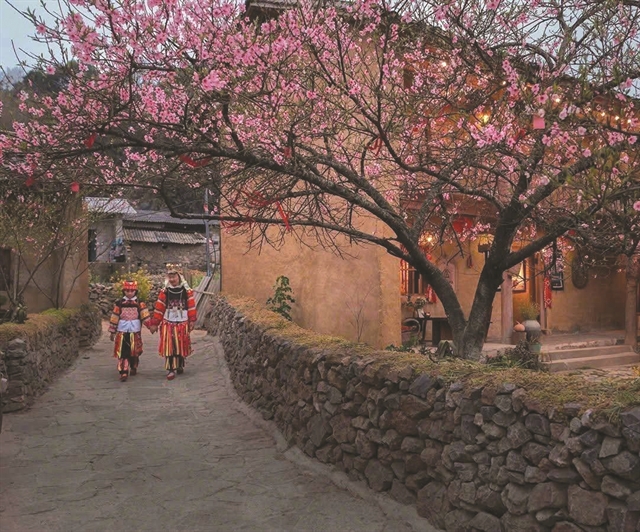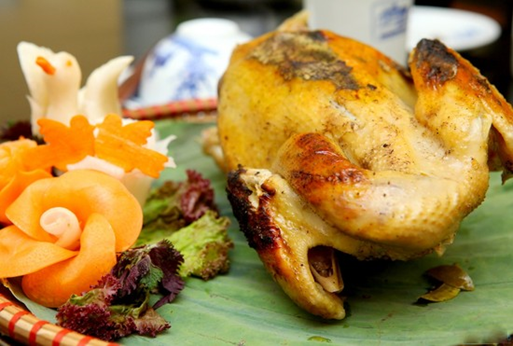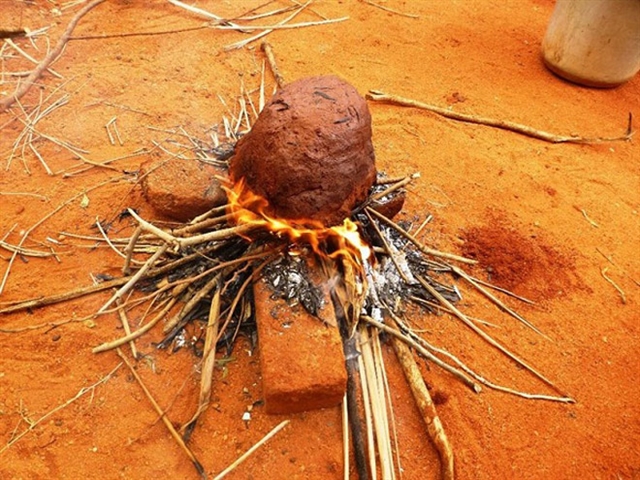 Life & Style
Life & Style

Gà nướng đất sét (grilled chicken wrapped in clay) is a delicious speciality of Việt Nam’s southwestern region thanks to its special and aromatic flavour, according to culinary expert Lê Kim Chi.
Hà Nguyễn & Hồ Hoàng
Gà nướng đất sét (grilled chicken wrapped in clay) is a delicious speciality of Việt Nam’s southwestern region thanks to its special and aromatic flavour, according to culinary expert Lê Kim Chi.
Chi, a daughter of late chef Lê Thị Vân who was one of 15 chefs that created hundreds of dishes carrying the southern region’s identity, said according to legend, the dish came from China during the Qing dynasty.

|
| No Title |
One day a beggar stole a chicken from a farm. He was making a fire to cook it, but when he noticed soldiers arriving he wrapped the chicken in clay and threw it in the fire to hide it.
When the soldiers left he broke the clay and had a baked chicken with a very fragrant smell. The dish was so tasty that it became royal cuisine, Chi said.
In another version of the story, a beggar stole a chicken, hid it in a lotus leave and then wrapped it in clay. He then cooked it in the ground to avoid detection. When the chicken was ready, the delightful smell attracted a king who was passing by, who told his soldiers to stop so he could eat with the beggar.
The king enjoyed the dish so much that he told his steward to put it on the royal menu, making the beggar a rich man.
The dish has existed for years in Việt Nam, particularly in the southwestern region. Locals often use lotus or banana leaf to give the dish a special flavour, Chi said.

|
| No Title |
A wild chicken or a reared chicken raised in the hills or gardens weighing 1.3-1.4kg is preferred.
The chicken is then soaked with pepper, cinnamon, star anise, cloves, fennel seeds, lime leaves and lemongrass for two hours. The clay should be taken from a river or a pond and should be soft enough.
Chi said the soaked chicken is wrapped in a lotus or banana leaf and then clay.
“The process of covering the chicken with the clay should be done carefully so it's not too thin or too thick. Grilling takes two hours.”
After the chicken is well cooked, one should open the clay to take the chicken out to tear it off into pieces then mix it with salt, pepper, lime juice and laksa leaves.
“The dish is often eaten with sticky rice and washed down with wine,” Chi said.
Housewives across the region know well how to cook the dish, she added.
As a culinary expert working for Quán Ăn Ngon chain’s Món Ngon Sài Thành Restaurant, Chi has brought the taste of the southwest to Hà Nội. The dish has won a lot of interests by local gourmets.
Nguyễn Văn Quân, a teacher and his friends in the capital city often go to the restaurant to enjoy the dish.
“The dish's quality at Món Ngon Sài Thành is almost the same as it is cooked by southerners. It is tasty and delicious with chicken meat that's firm and sweet, a bit crispy but not easily crumbled,” Quân said, adding that he asked Chi for the recipe so he could cook it at home.
The dish is not only popular among locals but also foreign tourists.
“Many foreign visitors order the dish when arriving at the restaurant,” Chi said.
Quân’s foreign friend from South Korea, Kim Young Sung, said: “ I like the dish so much. Although it is cooked with local ingredients it is so attractive for me. I often miss it when I come home and wish for the next trip to return enjoy it.” — VNS